Screen and sound
We will type it again just because it's so
great: 2,560x1,600. That has a lot of pixels in a 10.1-inch IPS LCD screen –
that is much more than a 1080p HDTV contains. It lies in something that
comfortably can be carried, and that can be purchased for under $400 is quite a
great achievement. It's really good to live in the future.
And indeed, everything looks amazingly
sharp here. Text is presented incredibly in a lively way and the UI looks more
beautiful than ever. The icons are clear and neat, although many third party
apps icons look like they could use a higher resolution rendering. Fortunately,
the apps themselves look very nice.
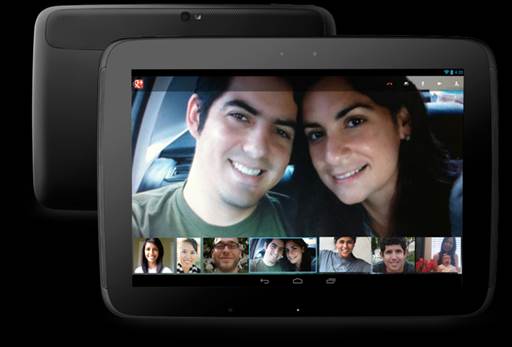
The
colors are well-rendered and the viewing angles are very good.
Remember when the new iPad appeared and
everyone struggled for updating their apps to support it? It is not necessary
here. Android is structured in such a way, in which the apps just naturally
support the higher resolution. We tried dozens of applications, including third-party
browsers such as Dolphin and many different random utilities and games, and we
did not determine any signs of the blurry text.
Of course, some graphics and assets are be
able to use a higher level of sophistication as they are consumed in an unreasonable
resolution, and those eye sights are less than 20/20 may squint at some
occasionally small texts, but it is considered as a big step over the chaotic
blurred stuff that many apps were on the Retina iPad when it was first
launched.
The brightness of the screen is quite good,
though not equal to 600 nits that Infinity can create. The colors are
well-rendered and the viewing angles are very good, but we were a bit
disappointed by the contrast. Blacks were slightly darker and sometimes looked
more purplish, and we could not avoid seeing some distracting light leakage
around the lower corners of the screen, something that we confirmed on the
second Nexus 10.
And we also want to point out that this
screen is protected under a glass sheet of Corning’s Gorilla Glass 2. This is a
good change compared to the Nexus 7, which is encased in other sort of shell
that we found that it was quite easily scratched.
We also have some doubts about the
speakers, but we're pleased to say they belong to the best we've ever heard on
a tablet. While many other tablet manufacturers move the speakers on the back
or at least the outward-facing sides, here they are located where they should
be: on the left and right of the screen and pointing front and center. The
sound is pretty warm, packing a lot of power for a tablet. But, the most
important part of that sentence is "for a tablet." Sound matches each
other, and you will want to enhance more serious viewing experiences with a set
of headphones or external speakers.
Performance and battery life
Again we are talking about a dual-core
1.7GHz A15 processor combined with 2GB of RAM and a Mali T604 GPU. Certainly,
the volume of RAM is quite good, but when compared with the quad-core 1.7GHz
Transformer Pad Infinity TF700 or with Samsung's recent Galaxy Note 10.1, in
theory, there seems to be no competition. As they used to say in motorcycle
racing, that's why they run the race, and in fact, the Nexus 10 feels fast.
Applications load quickly and the websites appear as fast as your data connection
can allow.
Nexus
10 ($399)
·
Quadrant: 4,551
·
Vellamo: 1,605
·
AnTuTu: 8,731
·
SunSpider 0.9.1 (ms): 1,371
·
GLBenchmark 2.5 Egypt Offscreen (fps): 33
·
CF-Bench: 9,772
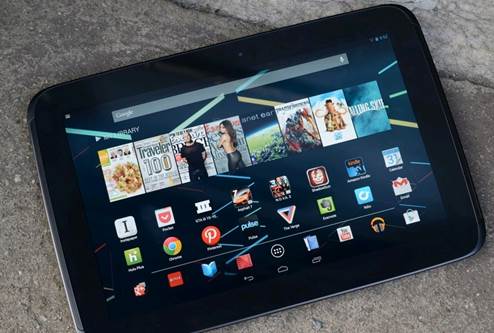
Nexus
10
ASUS
Transformer Pad Infinity TF700 ($499)
·
Quadrant: 4,685
·
Vellamo: 1,475
·
AnTuTu: 12,027
·
SunSpider 0.9.1 (ms): 2,012
·
GLBenchmark 2.5 Egypt Offscreen (fps): n/a (test
run with 2.1)
·
CF-Bench: 7,874
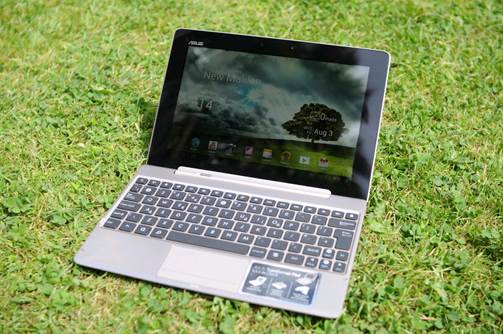
ASUS
Transformer Pad Infinity TF700
ASUS
Transformer Prime ($499)
·
Quadrant: 4,137
·
Vellamo: 1,418
·
AnTuTu: 10,269
·
SunSpider 0.9.1 (ms): 1,861
·
GLBenchmark 2.5 Egypt Offscreen (fps) :
n/a
·
CF-Bench: 11,861
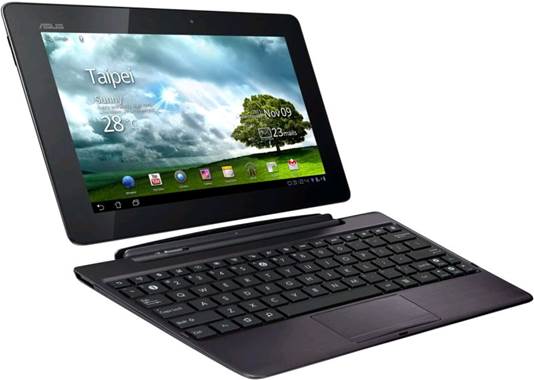
ASUS
Transformer Prime
Samsung
Galaxy Note 10.1
·
Quadrant: 5,695
·
Vellamo: 2,395
·
AnTuTu: 11,962
·
SunSpider 0.9.1 (ms): 1,193
·
GLBenchmark 2.5 Egypt Offscreen (fps): n/a
·
CF-Bench: 13,157
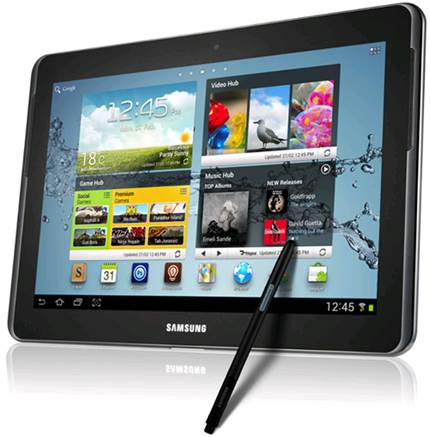
Samsung
Galaxy Note 10.1
(SunSpider:
lower scores are better)
Even in 3D gaming, the Nexus 10 still has
its own position, a result supported by an average score of 33 in the
GLBenchmark 2.5 test. Unfortunately, we did not run the TF700 through the
latest version of GLBenchmark, so we could not compare directly, but others
said about scores of 15fps from the Asus tablet. So, if you are looking for the
way to play heavy 3D gaming, this could be a better partner.
The TF700 has a higher battery life, 9
hours and 25 minutes compared to 7 hours and 26 minutes that is relatively
little here. That's on the standard test in which we constantly kept looping a
video on the tablet while the screen brightness is fixed. We found that the responsibility
for this performance lies mainly in the screen, because even the Galaxy Tab 2
10.1 also significantly did better, with 8 hours and 56 minutes.
Camera
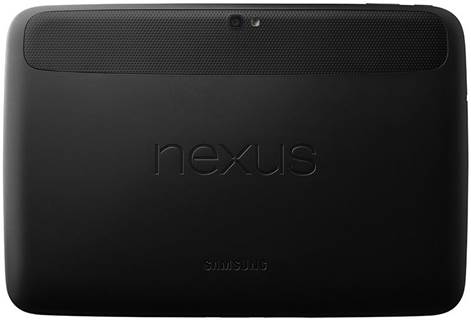
The
5MP rear camera was unable to mange to capture compelling images in almost all
cases.
Of course, Samsung knows how to create a
good imaging sensor - the Galaxy S II is still shining - so we are cautiously
optimistic here despite knowing that the company's tablets have historically
poor-quality cameras. We are very sorry to say this computer follows in their
footsteps. The 5MP rear camera was unable to mange to capture compelling images
in almost all cases. The complicated images were too light- colored and the
simple images were often shown with the unusual color temperatures that were
less associated with reality.
Unfortunately, that dynamic color
processing continues to arrive at the video recording aspect. The tablet has
the ability to record 1080p, but as you can see in the sample video, it is too
aggressive when selecting a color temperature, constantly moving from cold to
warm. Similarly, the camera showed some distracting focus during recording.
Admittedly, we found that photographing or
filming anything on any tablets cause tiredness, regardless of the quality of
the sensor, so the lack of a good quality camera is not a major minus point
here. But we realized that if you are worried about having a camera sensor on a
tablet, you might have a good one, too.